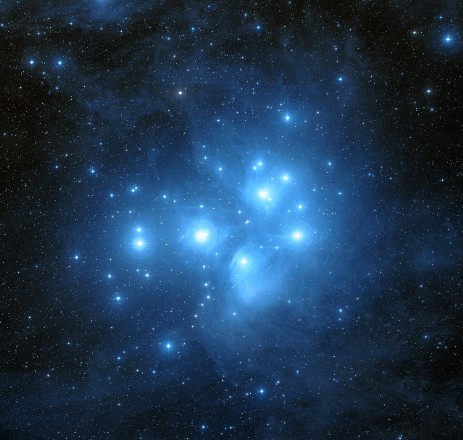Ammasso Aperto
di Tolomeo
Questa nuova immagine, ottenuta dallo strumento WFI (Wide Field Imager) montato sul telescopio da 2,2 metri dell'MPG/ESO all'Osservatorio dell'ESO di La Silla in Cile, mostra il brillante ammasso stellare Messier 7, noto anche come NGC 6475. Facilmente visibile a occhio nudo vicino alla coda della costellazione dello Scorpione, è uno dei maggiori ammassi aperti nel cielo e un importante oggetto di ricerche astronomiche.
Open Cluster M7
This new image from the Wide Field Imager on the MPG/ESO 2.2-metre telescope at ESO’s La Silla Observatory in Chile, shows the bright star cluster Messier 7, also known as NGC 6475. Easily spotted by the naked eye in the direction of the tail of the constellation of Scorpius (The Scorpion), this cluster is one of the most prominent open clusters of stars in the sky and an important research target.
Crediti: ESO, eso1406a
M7 Ammasso Aperto
Messier 7, chiamato anche NGC 6475 e, a volte conosciuto come il Ammasso di Tolomeo, è un ammasso aperto di stelle nella costellazione dello Scorpione. L'ammasso è facilmente osservabile ad occhio nudo, vicino al "pungiglione" dello Scorpione (chiamato anche Scorpio). Con una declinazione di -34,8 °, è l'oggetto di Messier più meridionale. L'ammasso M7 è conosciuto fin dall'antichità; è stato registrato dal 2° secolo dall'astronomo greco-romano Tolomeo, che lo ha descritto come una nebulosa, nel 130 dC. Per sapere di più...
Ammassi Aperti
Un ammasso aperto è un gruppo di stelle nate insieme da una nube molecolare gigante, e ancora unite dalla reciproca attrazione gravitazionale. Sono anche chiamati ammassi galattici, poiché si trovano solo all'interno del disco galattico. Si distinguono dagli ammassi globulari per il minor numero di stelle, un'attrazione gravitazionale meno forte e per il fatto che questi ultimi giacciono esternamente al piano galattico. Per saperne di più...
An open cluster is a group of up to a few thousand stars that were formed from the same giant molecular cloud and have roughly the same age. More than 1,100 open clusters have been discovered within the Milky Way Galaxy, and many more are thought to exist. They are loosely bound by mutual gravitational attraction and become disrupted by close encounters with other clusters and clouds of gas as they orbit the galactic center. More info...
L'ammasso aperto delle Pleiadi, conosciute anche come "Le sette sorelle" e M45, è uno degli ammassi di stelle più luminosi dell'emisfero boreale. L'ammasso consiste in brillanti, calde, giovani stelle che si sono formate nello stesso tempo circa 100 milioni di anni fa dentro una grande nube interstellare di polveri e gas. Credit: Caltech, Palomar Observatory, Digitized Sky Survey. Color composite, copyright: Davide De Martin.
The Pleiades star cluster, also known as the Seven Sisters and Messier 45, is one of the brightest star clusters visible in the northern hemisphere. It consists of many bright, hot, young stars that were all formed at the same time around 100 million years ago within a large cloud of interstellar dust and gas. Credit: Caltech, Palomar Observatory, Digitized Sky Survey. Color composite, copyright: Davide De Martin.
Sistema Solare Interno Mercurio Venere Terra | Sistema Solare Esterno | Via Lattea | Universo Supernova Extragalattiche |
Prenota la mostra per i tuoi eventi (da novembre 2017) | |||





































